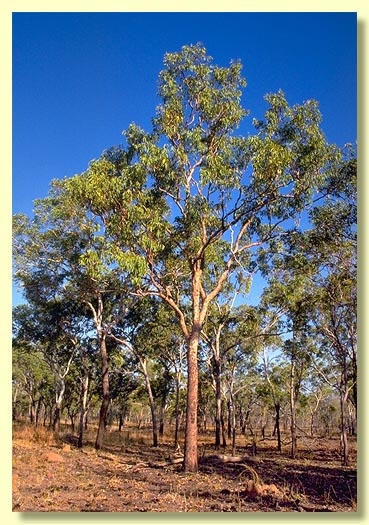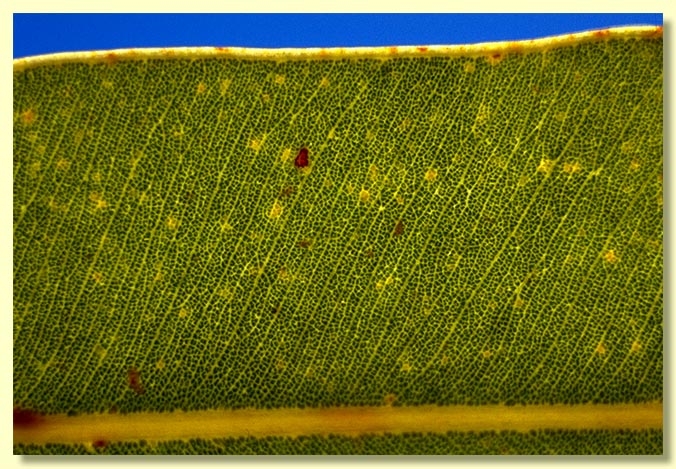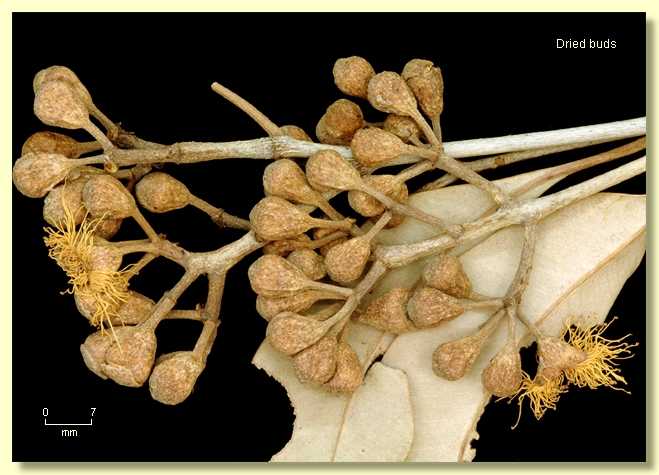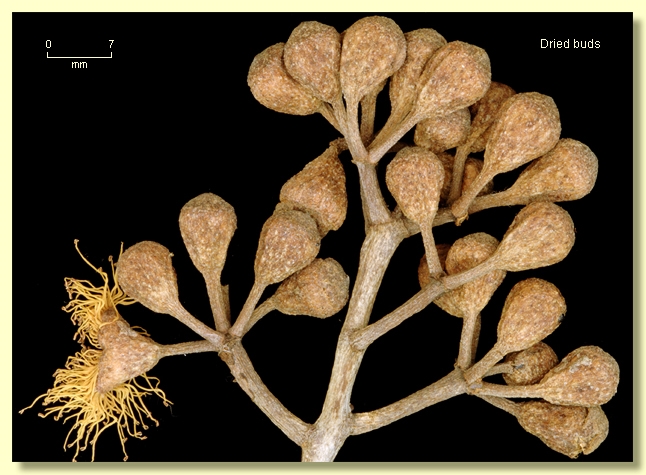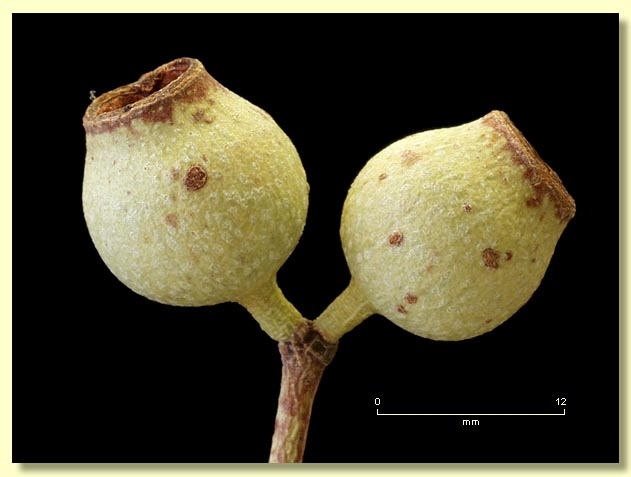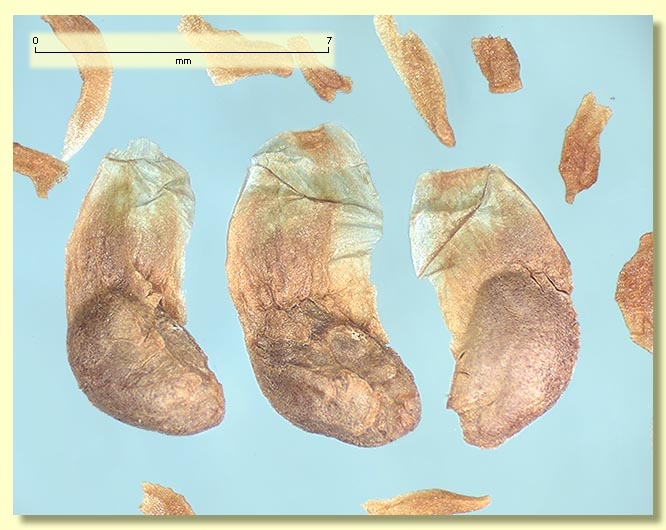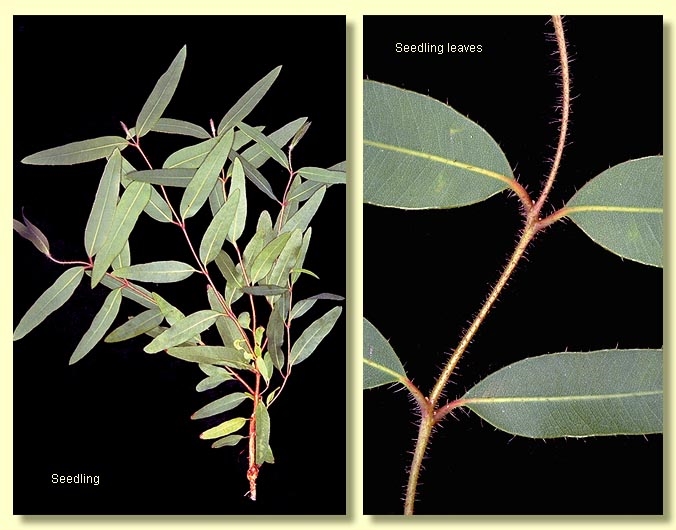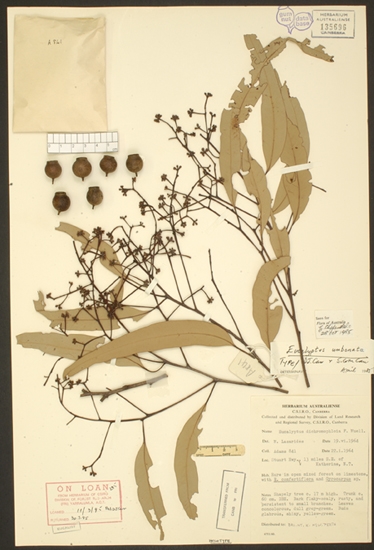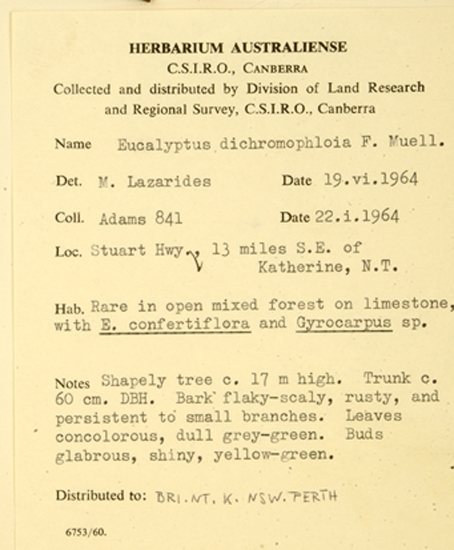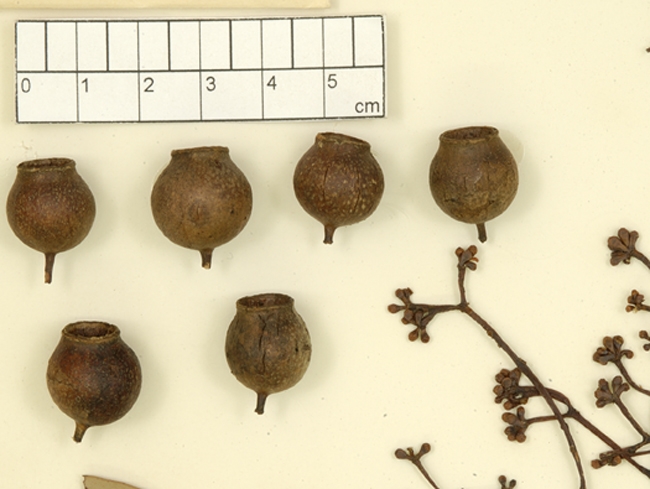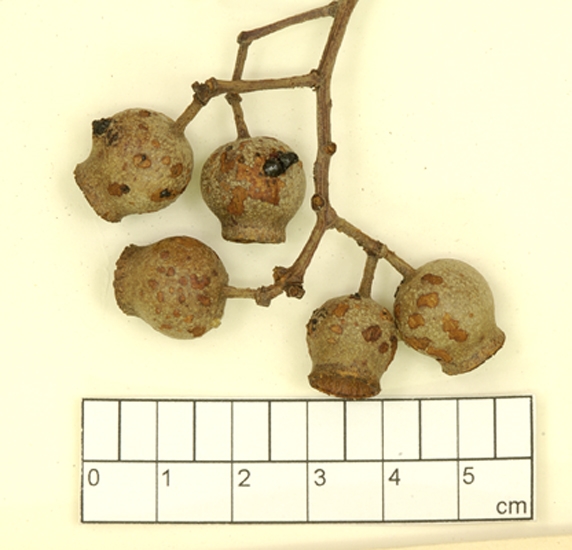Euclid - Online edition
Corymbia umbonata
Corymbia | Rufaria
Corymbia umbonata (D.J.Carr & S.G.M.Carr) K.D.Hill & L.A.S.Johnson, Telopea 6: 300 (1995).
Tree to 17 m tall. Forming a lignotuber.
Bark rough over whole trunk, often extending to larger limbs and smaller branches, thin, tessellated, scaly, grey over red-orange; if smooth above creamy pink to pale grey.
Branchlets lack oil glands in the pith.
Juvenile growth (coppice or field seedlings to 50 cm): stems rounded to square in cross-section, smooth; juvenile leaves always petiolate, alternate, ovate to elliptical, 5.5–15 cm long, 2.5–5.5 cm wide, base tapering to petiole, apex pointed, green, smooth.
Adult leaves alternate, petioles 1.4–4 cm long; blade lanceolate or falcate, 9–23(27) cm long, 0.8–2 cm wide, base tapering to petiole, margin entire, apex pointed, concolorous, dull or scarcely glossy, green or grey-green, smooth, side-veins at greater than 45° to midrib (penniveined), reticulation very dense, intramarginal vein apparently absent (confluent with margin), oil glands apparently absent.
Inflorescence terminal compound, peduncles terete or slightly angular, 0.2–1.1 cm long, buds usually 7 per umbel, pedicels 0.3–1.3 cm long. Mature buds obovoid or pyriform, 0.6–0.8 cm long, 0.5–0.6 cm wide, smooth, glossy, scar absent (both opercula shed together at flowering), operculum shallowly rounded or rarely almost conical, stamens inflexed, all fertile, anthers oblong, dorsifixed, versatile, dehiscing by longitudinal slits, style long and straight, stigma blunt or ? with a fringe of papillae, locules 4(5), the ovules not in distinct vertical rows on the placentae. Flowers creamy white.
Fruit pedicellate (pedicels 0.2–1.3 cm long), urceolate with a short to moderately long neck that is flared slightly at the rim, 1.2–1.9 cm long, 1.1–1.6 cm wide, smooth, disc descending vertically, valves 4(5), enclosed.
Seeds brown, 7–8 mm long, ellipsoidal with terminal wing, hilum ventral.
Cultivated seedlings (measured at ca node 10): cotyledons large, reniform; stems rounded in cross-section, setose with bristle-glands; leaves always petiolate (petioles to 0.5 cm), opposite for at least 10 nodes, narrowly lanceolate to elliptic, 7.5–10 cm long, 1.5–3.5 cm wide, base rounded or shallowly lobed, tapering at upper nodes, apex pointed or rounded, mid-green, discolorous, setose with bristle-glands.
Flowering has been recorded in March and April.
A bloodwood tree restricted to the Top End of the Northern Territory, where found between Katherine, Dorisvale, Willeroo and Newcastle Waters, occurring in savannah woodlands on well-developed sandy gravelly loams on flats, slight rises or low crests. Corymbia umbonata has thinly tessellated grey and orangey rough bark to at least the large branches then smooth, ± dull, concolorous green adult leaves lacking the intramarginal vein, and small glossy buds and urceolate fruit. The juvenile leaves are glabrous and ovate to 5.5 cm wide.
C. umbonata is closely related to C. dichromophloia, but the latter has white smooth bark with some persistent red flakes. Also the fruit are slightly larger (1.1–1.6 cm wide, cf. 0.6–1(1.5) cm wide in C. dichromophloia). Both C. latifolia and C. greeniana have broader adult leaves and glabrous and much broader juvenile leaves than C. umbonata. C. oocarpa differs in having much less rough bark on the trunk and being restricted to sandy pockets associated with the sandstone escarpment and plateau east of the distribution of C. umbonata. C. arnhemensis has coarser rough bark, discolorous adult leaves and narrower juveniles than C. umbonata.
MORE ABOUT CORYMBIA
MORE ABOUT RED BLOODWOODS
Corymbia umbonata: Latin umbo, boss or knob, allusion obscure.

